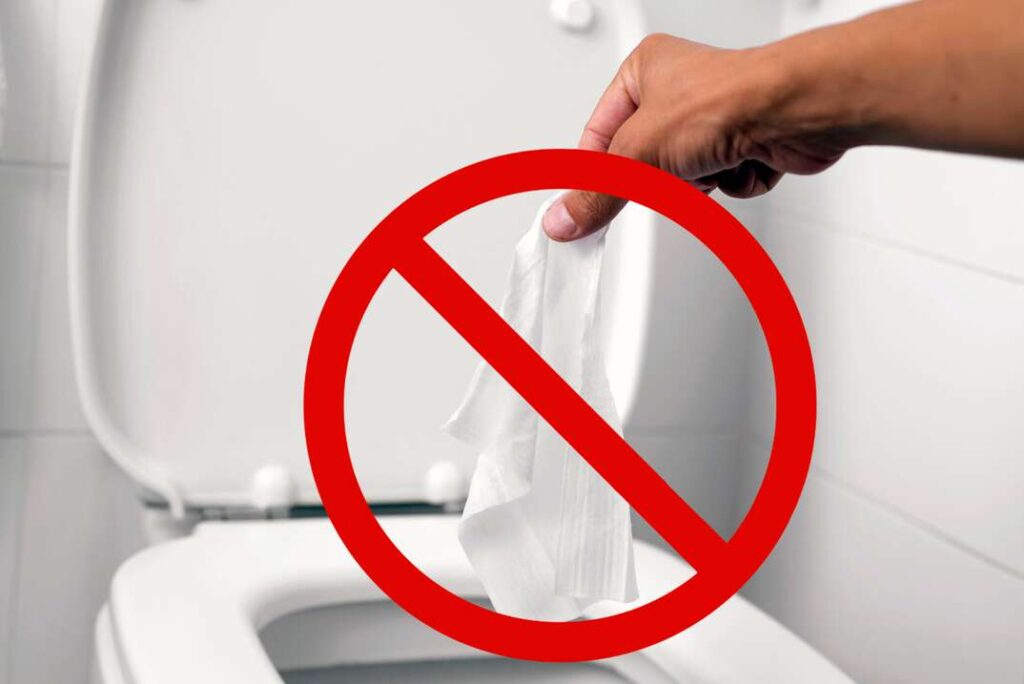
We all have those little bits of debris that accumulate around the house – hair, dust bunnies, and yes, even nail clippings. It’s tempting to simply toss them down the toilet for a quick and easy disposal method. However, this seemingly harmless act can lead to significant plumbing problems down the line.
This article will delve into the reasons why flushing nail clippings is a bad idea, exploring the potential dangers it poses to your plumbing system. We’ll also discuss effective preventative measures and proper disposal methods to ensure your drains remain clear and functional.
Nail Clippings and Plumbing Problems
Nail clippings, though seemingly small and insignificant, can wreak havoc on your plumbing system. They are made of keratin, a tough protein that doesn’t break down easily in water. When flushed, these clippings accumulate in your pipes, gradually forming a blockage. This buildup restricts water flow, leading to slow drains, gurgling noises, and eventually, complete clogs.
The problem is compounded by the fact that nail clippings often get entangled with other debris like hair and soap scum, creating a dense mass that’s even harder to remove. This can cause backups in your pipes, forcing wastewater to overflow into your home, leading to unsanitary conditions and costly repairs.
Dangers of Flushing Nail Clippings
Flushing nail clippings isn’t just about clogged drains; it poses several other dangers to your plumbing system:
Damage to Pipes
The buildup of nail clippings can exert pressure on your pipes, potentially causing cracks or even complete ruptures. This damage can be extensive and expensive to repair, requiring professional plumbers to replace damaged sections of piping.
Septic System Issues
If you have a septic system, flushing nail clippings can significantly disrupt its functionality. The solid waste from the clippings will not break down properly in your septic tank, leading to blockages and backups. This can result in sewage backing up into your home and contaminating your property.
Environmental Concerns
While it may seem insignificant, flushing nail clippings contributes to environmental pollution. The debris eventually ends up in waterways, harming aquatic life and disrupting ecosystems.
Preventing Clog Formation
Preventing clogs is always better than dealing with the aftermath. Here are some tips to keep your drains clear:
- Install Drain Strainers: These simple devices catch hair, nail clippings, and other debris before they enter your pipes.
- Regularly Clean Your Drains: Use a drain snake or plunger to remove any buildup that may have accumulated in your drains.
- Avoid Pouring Grease Down the Drain: Grease solidifies as it cools, contributing to clogs. Dispose of it properly in the trash.
Proper Disposal Methods
Instead of flushing nail clippings down the toilet, opt for these safe and effective disposal methods:
- Trash Can: The simplest solution is to dispose of nail clippings in a designated trash can.
- Compost Bin: If you have a compost bin, nail clippings can be added as a source of nitrogen.
- Recycling: Some communities offer recycling programs for keratin-based materials, which may include nail clippings.
Maintaining a Healthy Drainage System
A well-maintained drainage system is essential for a healthy and functional home.
Regular Inspections: Have your plumbing system inspected by a professional plumber at least once a year to identify potential issues before they become major problems.
Prompt Repairs: Address any leaks or clogs immediately to prevent further damage and ensure proper water flow.
Conclusion
Flushing can you flush fingernails and can you flush nail clippings down the toilet may seem like a convenient solution, but it’s a practice that can lead to significant plumbing problems and environmental concerns. By understanding the dangers of flushing these items and adopting proper disposal methods, you can protect your plumbing system, prevent costly repairs, and contribute to a healthier environment. Remember, a little effort in preventing clogs goes a long way in ensuring a smooth-flowing and functional drainage system for years to come.
